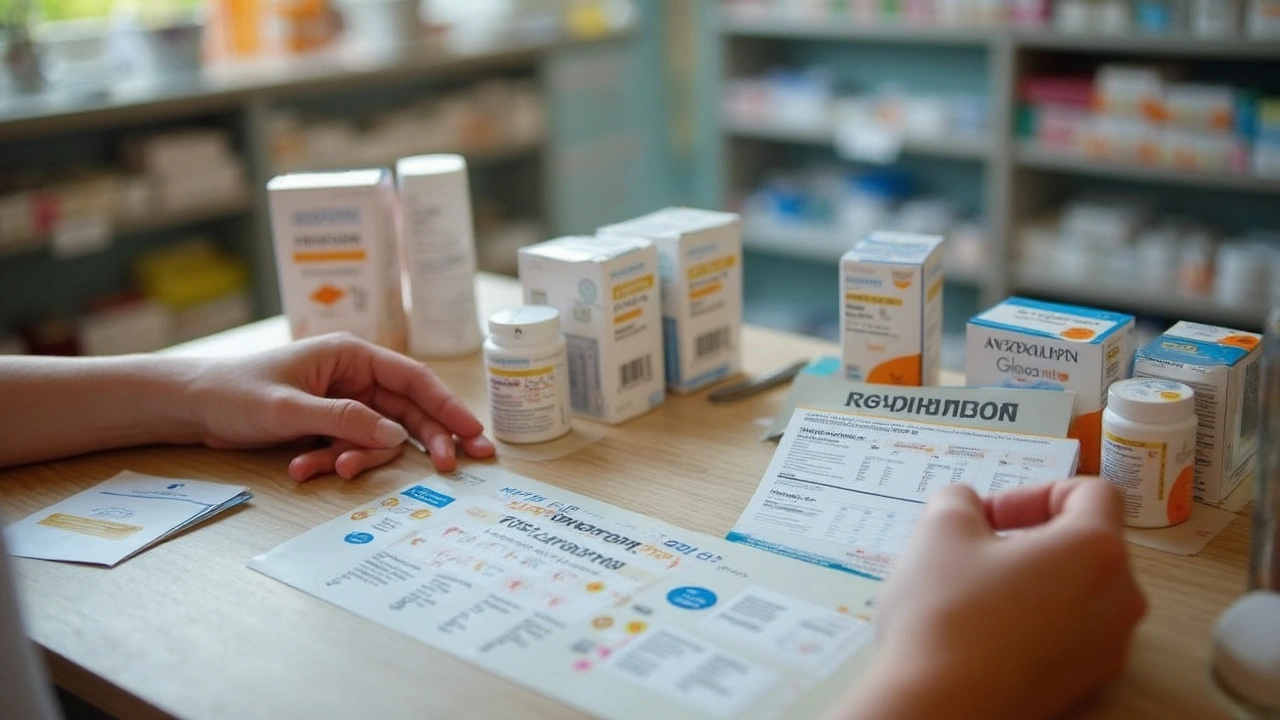Thinking about over-the-counter antibiotics? Many people assume you can grab pills off the shelf. That’s not true in most countries. Only a few topical antibiotic ointments and antiseptics are available without a prescription. Knowing what those products do and when to stop using them keeps you safer and helps prevent antibiotic resistance.
The most common OTC options are topical ointments and antiseptic solutions. Triple‑antibiotic ointments often combine bacitracin, neomycin, and polymyxin B for minor cuts and scrapes. If you prefer a single agent, bacitracin alone is widely sold and is less likely to cause allergic skin reactions than neomycin. Antiseptics like povidone‑iodine or hydrogen peroxide clean the skin surface but don’t replace proper wound care.
How to use topical antibiotics safely
First, clean the wound with running water and mild soap. Pat dry with a clean cloth. Apply a thin layer of ointment once or twice daily to small, superficial cuts and cover with a sterile bandage. If the area gets redder, more painful, or swollen, stop the ointment and get medical advice. Don’t use topical antibiotics on large wounds, deep punctures, animal bites, or severe burns — those need professional care.
Look for spreading redness, fever, pus, increasing pain, red streaks toward the heart, or wounds that won’t stop bleeding. These signs suggest a deeper infection or a need for prescription oral antibiotics. Also seek help for wounds from animal or human bites, or if you haven’t had a tetanus shot in the last ten years.
Risks of buying oral antibiotics OTC online
Online sellers that claim to sell oral antibiotics without a prescription are risky. Pills purchased this way may be fake, expired, or the wrong drug or dose. Taking antibiotics without proper diagnosis can do harm, cause side effects, and promote resistant bacteria. Always consult a licensed healthcare provider before starting oral antibiotics.
Alternatives and basic wound care
Good wound care prevents many infections: clean, stop bleeding, apply a dressing, and change it daily. Over-the-counter pain relievers and cold compresses help swelling. For stubborn or contaminated wounds, a clinic can give stitches, a prescription antibiotic, or a tetanus shot if needed.
Quick buying and safety tips
Buy OTC ointments from reputable pharmacies or known stores. Check the active ingredients, look for skin allergy warnings, and discard expired products. If you have allergies to neomycin or other ingredients, choose a different product. When in doubt, call a nurse line or visit an urgent care clinic.
Note for parents and travelers: children’s skin can react differently — ask a pediatrician before using ointments on infants. Laws vary by country; some places allow different OTC products. If you travel, check local rules and carry a basic first aid kit with approved ointments.
This covers what OTC antibiotics actually are, how to use them safely, and when to get professional help. Use them sparingly and get advice for anything beyond small, clean cuts.

Curious which over-the-counter options stack up against amoxicillin? This article explores 10 OTC antibiotics or drugstore products with similar effects, comparing their efficacy and use. You’ll find interesting facts, tips on choosing the right alternative, and practical stats, all structured for clarity. Get ready for an in-depth, honest look at how drugstore meds measure up to this popular prescription antibiotic. From hidden risks to smart ways to shop, this guide covers what you need before making a decision.
Explore the advantages and drawbacks of congestion pricing, its impact on traffic, emissions, equity, and how cities fund better public transit.
Get the lowdown on Zyprexa, a medication widely used for serious mental health conditions like schizophrenia and bipolar disorder. This deep dive covers how it works, what to expect, tips for handling side effects, and real-life facts you won't find on drug labels. Whether you're navigating a new diagnosis or supporting someone who takes Zyprexa, you'll find practical advice and clear info right here.
Hi there, gentlemen! In today's blog post, we're going to tackle some of the most common myths and misconceptions surrounding high uric acid levels and gout. I bet you've heard many of them before, but rest assured, our aim is to debunk these myths and arm you with the facts. Let's navigate this journey together, separating fact from fiction when it comes to your health.
Explore six trusted online pharmacies as alternatives to CanadaCloudPharmacy in 2024. These Canadian pharmacies offer a wide selection of prescription and over-the-counter medications, each with unique strengths such as competitive pricing, secure ordering, and vast medication ranges. Discover the pros and cons of each platform to find the best option for your healthcare needs.
Learn how to safely buy cheap generic Seroquel (quetiapine) online in Canada. Get step‑by‑step tips, price comparisons, and red‑flag warnings for 2025.